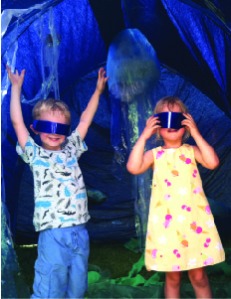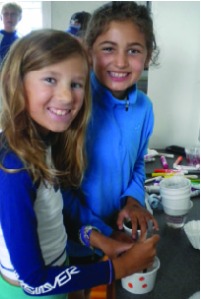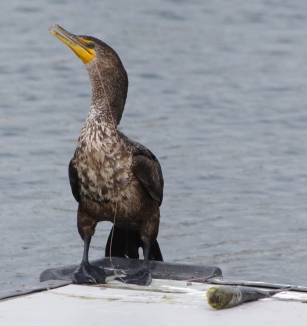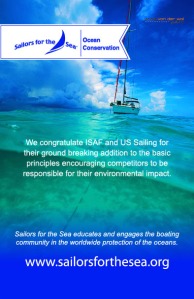
A scaled up version of All the Glitters at the Newport America’s Cup Wold Series. Kids & adults learned to “see like a fish” in the deep ocean.
This January marks the second year of our Rainy Day Kits program! Since the programs inception 45,000 children have explored the ocean ecosystem with these hands on, interactive lesson plans. We have found that 55% of downloads come from sailing programs, and 45% from museums, camps, and schools. Showing the lesson plans diversity!
Rainy Day kits are informal, fun lesson plans that allow children to learn about marine ecology and ocean conservation without expensive laboratory materials. Lesson supplies can generally be found in an office, or purchased with a quick trip to staples. If you are very resourceful, you can collect some supplies right out of the recycling bin!
We have rounded up a few our favorite things involving Rainy Day Kits:
Our favorite lesson name: The Deadliest Catch
Our favorite lesson to teach: Dirty Water Challenge – get nice and muddy teaching kids about the water cycle!
Best quotes: From John O’Flaherty, Providence Community Boating: “The best way to protect the environment is to create little environmentalist. Rainy Day Kits from Sailors for the Sea drive home today’s biggest ecological concepts to our smallest stakeholders. Out youths sailors will be seeing these kits in our lesson plans – rain or shine.”
Best picture:

Sailors at Ida Lewis Yacht Club learn about the water cycle with Dirty Water Challenge.
A big thanks to our contributors: Pew Environment Group, Scipps Institute of Oceanography, University of Miami’s R.J. Dunlap Marine Conservation Program, Monterey Bay Aquarium’s Seafood Watch, The Rozalia Project for a Clean Ocean, Hudson River Sloop Clearwater, the New England Aquarium, the Harte Institute for Gulf of Mexico Studies, and the Rosenstiel School of Marine and Atmospheric Science.
To download vist: http://sailorsforthesea.org/programs-and-projects/rainy-day-kits.aspx





